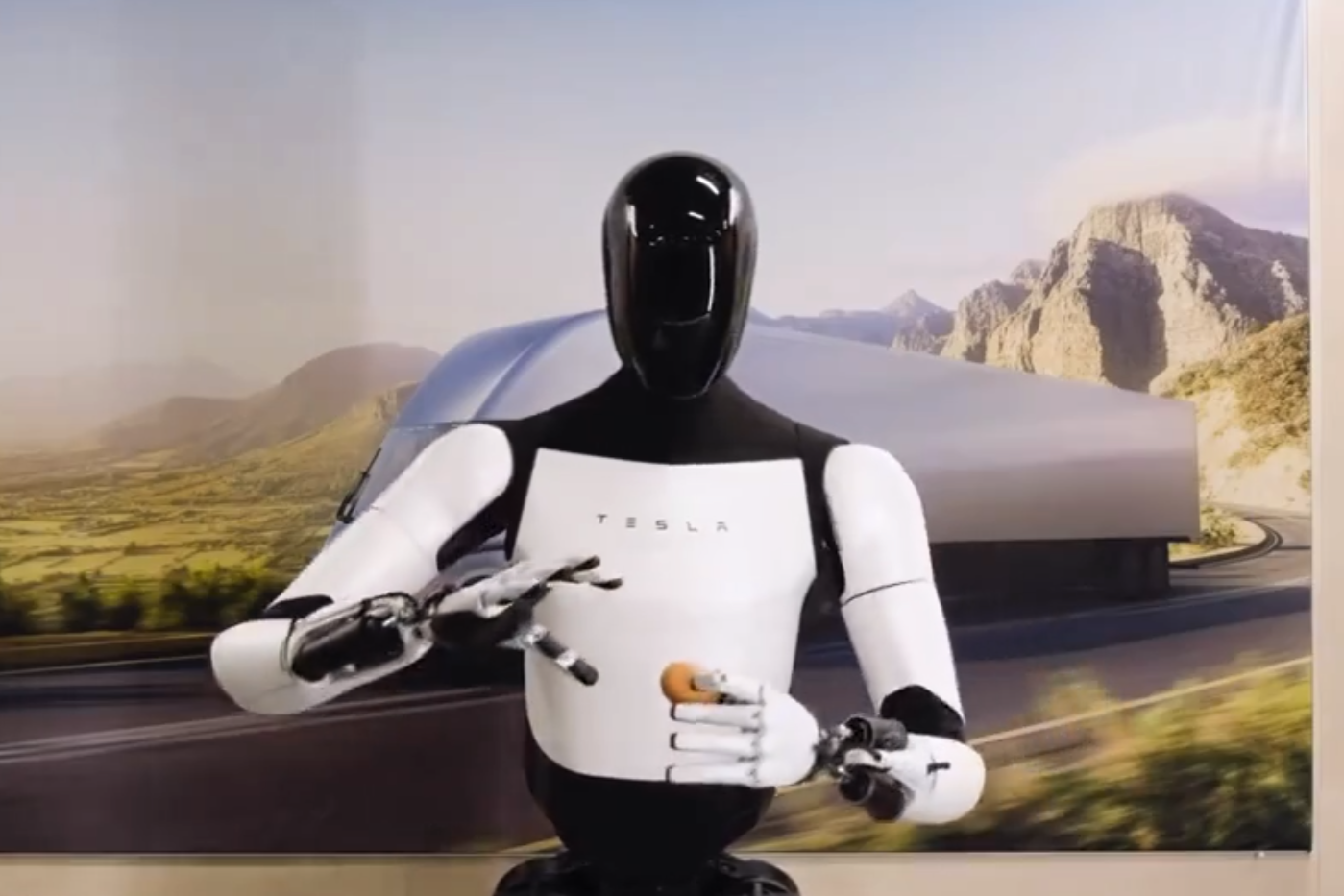Is this the ‘ChatGPT moment’ for robots – and will they soon be walking among us?
When a robot placed a coffee capsule into a machine and made itself a cup without any pre-programming, it heralded a new era of the automated human. So, asks Anthony Cuthbertson, what does this mean for humanity as these humanoids increasingly live and work alongside us?


On 5 January, a robot placed a capsule into a coffee machine, closed the lid, and pressed a button. It took less than 30 seconds, but, according to its creators, it was a historic moment, heralding a new era of machines living and working alongside us.
Made by the US start-up Figure, the robot, which stands 5ft 6in tall and has roughly the same proportions as a human, had spent 10 hours watching through its camera eyes as people performed the same task. This was the only training it received, and it marked the first time that a robot had made a cup of coffee without any pre-programming.
Figure’s co-founder and chief executive, Brett Adcock, described it as a “ChatGPT moment”, referring to the viral AI chatbot that brought generative artificial intelligence into the mainstream.
“The reason why this is so groundbreaking is if you can get human data for an application (making coffee, folding laundry, warehouse work, etc), you can then train an AI system end-to-end,” Adcock wrote on X, formerly Twitter, following the demonstration. “There is a path to scale for every use case.”
Figure claims its creation is the “world’s first commercially viable autonomous humanoid robot”, and that once one of its robots learns a task, they all do. Robots may not sleep, but they do share a form of collective dream that takes place in the Cloud, which allows them to share knowledge gained from the real world with other machines, similar to the way in which self-driving cars map roads and learn traffic behaviour.
“When the fleet expands, further data is collected from the robot fleet, [they are] retrained, and the robot achieves even better performance,” Adcock said. “Very few understand how important this is.”
Among those who appear unconvinced by Figure’s claims is Nvidia’s lead AI research scientist Jim Fan. Just a week before Figure’s coffee stunt, Fan shared his thoughts on what he was looking forward to beyond large language models (LLMs) like ChatGPT.
“I’ve been asked what’s the biggest thing in 2024 other than LLMs,” he wrote on LinkedIn. “It’s robotics. Period. We are ~3 years away from the ChatGPT moment for physical AI agents.”
Following Adcock’s claim that this moment had arrived, Fan countered that robotics still has a “loooong way” to go. “The first step to climb the Everest is to recognise how far away the peak is,” he wrote on X. “Focus on the mission. Stay grounded. Keep building.”
Nvidia is already working with robotics firms such as Boston Dynamics and Collaborative Robotics to integrate LLMs into their robots in order to improve their understanding of text and voice commands. Others working on merging AI with robotics include Google DeepMind, whose AI has consistently made headlines for outperforming humans.
On 3 January, DeepMind launched three new papers showing how large vision and language models could allow robots to follow commands like “Tidy the house” or “Cook a meal”. The AutoRT model is capable of directing up to 20 robots simultaneously, though it is yet to be proven in a practical way. Previous demonstrations of DeepMind’s AI robots saw them figure out how to play football, and although the results were entertaining, they were nowhere near human level.
Figure envisions robots filling roles in almost every industry. According to its website, this could be everything “from corporate labour roles (3+ billion humans), to assisting individuals in the home (2+ billion), to caring for the elderly (~1 billion), and to building new worlds on other planets”.
This kind of scale was acknowledged in a 2022 report by financial firm Macquarie, which predicted that humanoid robots could become a $3 trillion (£2.35 trillion) market by 2050. Such lofty projections are shared by Tesla boss Elon Musk, who predicts that his company’s humanoid robot Optimus will one day outsell its cars, while also helping set up a colony on Mars by the middle of the century.
“Essentially, in the future, physical work will be a choice: if you want to do it you can, but you won’t need to do it,” he said at his firm’s AI day in 2021. “It has profound implications for the economy, given that the economy at its foundational level is labour.”
Placing advanced artificial intelligence into humanoid shells has also led to inevitable concerns about the safety of AI, with some fearing the type of dystopia portrayed in films like The Terminator and I, Robot.
Unlike other companies that are working on humanoid robots, such as Boston Dynamics with its back-flipping bots, Musk claims to be deliberately stifling the physical abilities of Tesla’s robots.
“We’re setting it such that it is – at a mechanical level, at a physical level – you can run away from it, and most likely overpower it,” he said. “Hopefully that doesn’t ever happen, but you never know.”
It may seem a long way before this kind of apocalyptic scenario is even possible, but the prospect of hacked humanoids or rogue developers means it is not impossible to imagine.

Figure says its robot represents the first generation of the “world’s first commercially viable autonomous humanoid robot”. In order to achieve this, the company is trying to make its robots as human as possible. “Right now, what we’re trying to do is fully end-to-end autonomous applications with this robot, so doing human-like work at human-like speeds,” Adcock said. “We want it to do the same things humans can: sit in a chair, operate machinery, use tools.”
The coffee-making robot is yet to have a breakout impact similar to that of ChatGPT, which became the world’s fastest-growing app in history following its launch in November 2022. But undeterred, Figure claims that another “industry-leading announcement” will be made next week.
For robotics to truly have the kind of impact ChatGPT had, it will take a machine that anyone can interact with or command in a useful way without too much cost or fuss. That may not be yet, but it might be soon.





Join our commenting forum
Join thought-provoking conversations, follow other Independent readers and see their replies
Comments